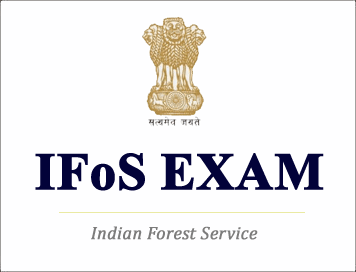(HOT) UPSC Current Affairs 2025 PDF
NEW! The Gist (NOV-2025) | E-BOOKS
UPSC IFOS Exam Syllabus : Agricultural Engineering
UPSC IFOS Exam Syllabus : Agricultural Engineering
::Agriculture Engineering::
Paper-I
Section A
1. Soil and Water Conservation : Scope of soil and water conservation. Mechanics and types of erosion, their causes. Rainfall, runoff and sedimentation relationships and their measurement. Soil erosion control measures - biological and engineering including stream bank protection-vegetative barriers, contour bunds, contour trenches, contour stone walls, contour ditches, terraces, outlets and grassed waterwyas. Gully control structures - temporary and permanent - design of permanent soil conservation structures such as chute, drop and drop inlet spillways. Design of farm ponds and percolation ponds. Principles of flood control-flood routing. Watershed Management - investigation, planning and implementation - selection of priority areas and water shed work plan, water harvesting and moisture conservation. Land development - levelling, estimation of earth volumes and costing. Wind Erosion process - design fo shelter belts and wind brakes and their management. Forest (Conservation) Act,
2. Aerial Photography and Remote Sensing : Basic characteristics of photographic images, interpretation keys, equipment for interpretation, imagery interpretation for land use, geology, soil and forestry.
Remote sensing - merits and demerits of conventional and remote sensing approaches. Types of satellite images, fundamentals of satellite image interpretation, teachniques of visual and digital interpretations for soil, water and land use management. Use of GIS in planning and development of watersheds, forests including forest cover, water resources etc.
Section B
3. Irrigation and Drainage : Sources of water for irrigation. Planning and design of minor irrigation projects. Techniques of measuring soil moisture - laboratory and in situ, Soil-water plant relationships. Water requirement of crops. Planning conjunctive use of surface and ground weater. Measurement of irrigation water, measuring devices - orifices, weirs and flumes. Methods of irrigation - surface, sprinkler and drip, fertigation. Irrigation efficiencies and their estimation. Design and construction of canals, field channels, underground pipelines, head-gates, diversion boxes and structures for road crossing. Occurrence of ground water, hydraulics of wells, types of wells (tube wells and open wells) and their construction. Well development and testing. Pumps-types, selection and installation. Rehabilitation of sick and failed wells.
Drainage causes of waterlogging and salt problem. Methods of drainage— drainage of irrigated and unirrigated lands, design of surface, sub-surface and vertical drainage systems. Improvement and utilization of poor quality water. Reclamation of saline and alkali soils. Economics of irrigation and drainage systems. Use of waste water for irrigation — standards of waste water for sustained irrigation, feasibility and economics.
4. Agricultural Structures : Site selection, design and construction of farmstead - farm house, cattle shed, dairy bam, poultry shed, hog housing, machinery and implement shed, storage structures for food grains, feed and forage. Design and consturction of fences and farm roads. Structures for plant environment - green houses, poly houses and shade houses. Common building materials used in construction - timber, brick, stone, tiles, concrete etc and their properties. Water supply, drainage and sanitation system.
Paper-II
Section A
1. Farm Power and Machinery : Agricultural mechanization and its scope. Sources of farm power - animate and electro-mechanical. Thermodynamics, construction and working of internal combustion engines. Fuel, ignition, lubrication, cooling and governing system of IC engines. Different types of tractors and power tillers. Power tramsmission, ground drive, power take off (p.t.o.) and control systems. Operation and maintenance of farm machinery for primary and secondary tillage. Traction theory. Sowing transplanting and interculture implements and tools. Plant protection equipment - spraying and dusting. Harvesting, threshing and combining equipment. Machinery for earth moving and land development - methods and cost estimation. Ergonomics of man-machine system. Machinery for horticulture and agro-forestry, feeds and forages. Haulage of agricultural and forest produce.
2. Agro-energy : Energy requirements of agricultural operations and agro-processing. Selection, installation, safety and maintenance of electric motors for agricultural applications. Solar (thermal and photovoltoic), wind and bio-gas energy and their utilization in agriculture. Gasification of biomass for running IC engines and for electric power generation. Energy efficient cooking stoves and alternate cooking fuels. Distribution of electricity for agricultural and agro-industrial applications.
Section B
3. Agricultural Process Engineering : Post harvest technology of crops and its scope. Engineering properties of agricultural produces and by-products. Unit operations - clearning grading, size reduction, densification, concentration, drying/dehydration, evaporation, filtration, freezing and packaging of agricultural produces and by-products. Material handling equipment - belt and screw conveyors, bucket elevators, their capacity and power requirement. Processing of milk and dairy products - homogenization, cream separation, pasteurization, sterilization, spray and roller drying, butter making, ice cream, cheese and shrikhand manufacture. Waste and by-product utilization - rice husk, rice bran, sugarcane bagasse, plant residues and coir pith.
4. Instrumentation and computer applications in Agricultural Engineering : Electronic devices and their characteristics - rectifiers, amplifiers, oscillators, multivibrators. Digital circuits — sequential and combinational system. Application of microprocessors in data acquisition and control of agricultural engineering processes- measurement systems for level, flow, strain, force, torque, power, pressure, vaccum and temperature. Computers — introduction, input/output devices, central processing unit, memory devices, operating systems, processors, keyboards and printers. Algorithms, flowchart specification, programme translation and problem analysis in Agricultural Engineering. Multimedia and Audio-Visual aids.



